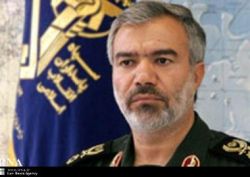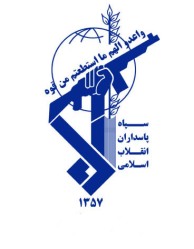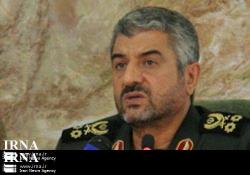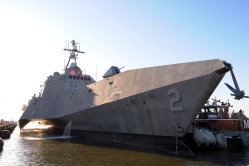
Rear Admiral Ali Fadavi, Commander of the Islamic Revolutionary Guards Corps Navy (Image: TehranTimes)
Iranian media announced earlier this month that the navy of the Republican Guards will hold exercises around the Strait of Hormuz during which it will practice closing the vital sea-lane in the shortest possible time.
Shortly after the Iranian Navy ended its 10-day exercise “Velayat 90”, the naval arm of the Islamic Revolutionary Guards Corps (IRGC-N) will start its own military drill “Great Prophet” on 27 January. Rear Admiral Ali Fadavi, the commander of the IRGC-N, was quoted by Press TV as saying that the upcoming maneuvers will be different compared to previous exercises held by the IRGC, although he did not elaborate in what way.
Apart from its armed forces with the classic branches army, navy and air force, plus air defense forces, Iran has a separate military force called the Islamic Revolutionary Guards Corps (IRGC). Since the Islamic revolution in 1979 the armed forces are considered somewhat ‘tainted’ by their history as the former imperial military of the Shah. The IRGC is generally seen as more trustworthy and more consolidated ideologically.
Founded after the revolution, the Army of the Guardians of the Islamic Revolution was originally tasked to deal with internal security and protection of the Islamic government. Over the years it became practically a state within the state with its own military, security and economic interests.
The IRGC consists of army, navy, aerospace force, Quds force with an estimated total of more than 125,000 men under arms, plus about 90,000 active members of the Basij militia. While the Basij is an auxiliary force of civilian volunteers, the other branches of the IRGC are professional soldiers.
It is worth mentioning that the aerospace force controls Iran’s strategic missile forces. The Quds force is tasked to export the Islamic revolution to foreign countries (Lebanon, Syria, etc.).
The IRGC Navy is equipped with about 1,500 small craft like speed boats and midget submarines and has a strength of 20,000 sailors and 5,000 marines. While the Iranian Navy is now operating in the Caspian Sea and the Gulf of Oman, the IRGC-N has the full responsibility for the critical Persian Gulf.
Knowing full well that neither the Iranian Navy nor the IRGC-N can hope to match the conventional capabilities of the US Navy or Iran’s more advanced neighbours, the leadership of the Revolutionary Guards seeks to exploit the vulnerabilities of large conventional forces. As Major General Mohammad Ali Jaffari, the commander of Revolutionary Guards, put it, “The enemy is far more advanced technologically than we are, we have been using what is called asymmetric warfare methods [ ] our forces are now well prepared for it.”
To that effect the IRGC-N has acquired a large number of missile and torpedo boats and speed boats, midget submarines, mine-laying units and anti-ship missiles and is regularly training what it calls “mosaic defense”. A recent analysis concludes that it can carry out extensive raids against shipping in the Gulf and Saudi Arabia and other countries on the southern Gulf coast. It could also -at least temporarily – shut down all ship traffic through the bottleneck of the Strait of Hormuz.
As an answer to the growing threat of asymmetric naval warfare, the US Navy began acquiring Littoral Combat Ships (LCS), a new family of ships to counter that threat. The LCSs are fast, highly maneuverable, able to operate in shallow water and can deal with mines, submarines, explosive-filled speed boats or terrorist attacks. Three vessels have been commissioned so far. — (Johann Brandstätter)
(Sources: Center for International & Strategic Studies, Press TV, Mehr News, Global Bearings, Naval Technology, General Dynamics, US Navy; 11 Jan 2012)




